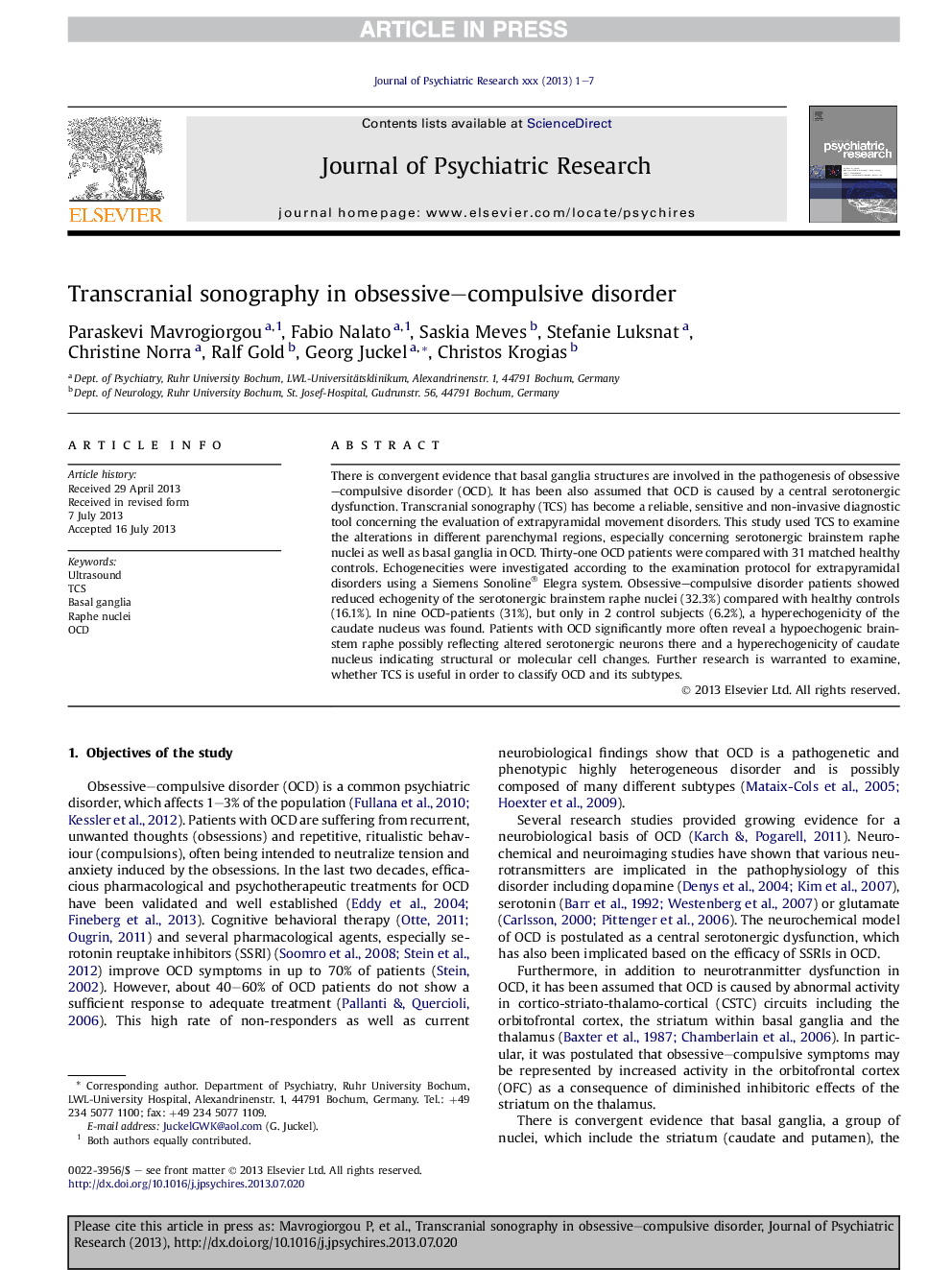| کد مقاله | کد نشریه | سال انتشار | مقاله انگلیسی | نسخه تمام متن |
|---|---|---|---|---|
| 10302460 | 542940 | 2013 | 7 صفحه PDF | دانلود رایگان |
عنوان انگلیسی مقاله ISI
Transcranial sonography in obsessive-compulsive disorder
ترجمه فارسی عنوان
سونوگرافی ترانس کرانانی در اختلال وسواسی-اجباری
دانلود مقاله + سفارش ترجمه
دانلود مقاله ISI انگلیسی
رایگان برای ایرانیان
موضوعات مرتبط
علوم زیستی و بیوفناوری
علم عصب شناسی
روانپزشکی بیولوژیکی
چکیده انگلیسی
There is convergent evidence that basal ganglia structures are involved in the pathogenesis of obsessive-compulsive disorder (OCD). It has been also assumed that OCD is caused by a central serotonergic dysfunction. Transcranial sonography (TCS) has become a reliable, sensitive and non-invasive diagnostic tool concerning the evaluation of extrapyramidal movement disorders. This study used TCS to examine the alterations in different parenchymal regions, especially concerning serotonergic brainstem raphe nuclei as well as basal ganglia in OCD. Thirty-one OCD patients were compared with 31 matched healthy controls. Echogenecities were investigated according to the examination protocol for extrapyramidal disorders using a Siemens Sonoline® Elegra system. Obsessive-compulsive disorder patients showed reduced echogenity of the serotonergic brainstem raphe nuclei (32.3%) compared with healthy controls (16.1%). In nine OCD-patients (31%), but only in 2 control subjects (6.2%), a hyperechogenicity of the caudate nucleus was found. Patients with OCD significantly more often reveal a hypoechogenic brainstem raphe possibly reflecting altered serotonergic neurons there and a hyperechogenicity of caudate nucleus indicating structural or molecular cell changes. Further research is warranted to examine, whether TCS is useful in order to classify OCD and its subtypes.
ناشر
Database: Elsevier - ScienceDirect (ساینس دایرکت)
Journal: Journal of Psychiatric Research - Volume 47, Issue 11, November 2013, Pages 1642-1648
Journal: Journal of Psychiatric Research - Volume 47, Issue 11, November 2013, Pages 1642-1648
نویسندگان
Paraskevi Mavrogiorgou, Fabio Nalato, Saskia Meves, Stefanie Luksnat, Christine Norra, Ralf Gold, Georg Juckel, Christos Krogias,
